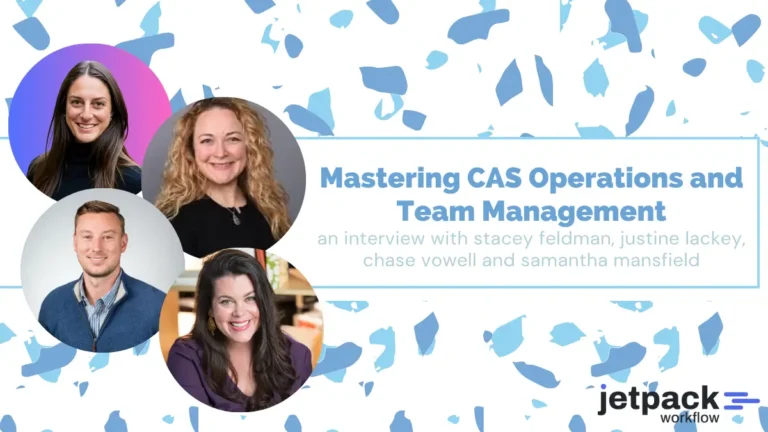CAS Panel: Mastering Pricing and Packaging

Summary
In this episode, host David gathers a panel of industry experts to discuss the nuances of pricing and packaging in the accounting sector. The panelists include Mark Stovel, a CPA from Canada who runs a consulting firm for CPA owners and works as a fractional CFO; Luke Templin from Omaha, Nebraska, who operates a fractional CFO business and develops financial software; Ashleigh Sutter, who brings over a decade of experience in Client Accounting Services (CAS) and currently works at CLA; and Wendy Barlin, who has extensive experience in CAS and recently joined Roth to develop their CAS department. The conversation promises to delve into the challenges and strategies surrounding pricing and packaging for accounting services, drawing on the diverse experiences of the panelists. Tune in to gain valuable insights that can enhance your understanding of this critical aspect of the accounting industry.
Every Problem is a Pricing Problem
The assertion that “every problem is a pricing problem” encapsulates a fundamental truth in the realm of accounting and consulting services. This idea, emphasized by Mark Stovel during a recent podcast episode, suggests that many challenges faced by firms can be traced back to their pricing strategies. Here are several key points that illustrate this concept:
1. Capacity and Profitability
Mark highlights that if a firm struggles with capacity—whether due to an overwhelming number of clients or insufficient resources—this often stems from inadequate pricing strategies. When services are priced too low, firms may find themselves inundated with clients who demand more than they can deliver. Conversely, if pricing is set appropriately, firms can afford to hire the necessary staff to manage their workload effectively, thereby enhancing service delivery and client satisfaction.
2. Client Complexity and Scope Creep
Wendy and Luke discuss the challenges of managing client expectations and scope creep. When clients are unclear about what they are paying for, or when the pricing structure does not account for the complexity of their needs, firms can find themselves in difficult situations. For instance, if a client has multiple entities or requires extensive cleanup work, the firm may end up providing services that exceed the original scope without appropriate compensation. This can lead to frustration for both the firm and the client, underscoring the importance of a pricing model that reflects the true value of the services provided.
3. Value-Based Pricing
Luke emphasizes the significance of value-based pricing, where the price is determined by the perceived value of the service to the client rather than merely the cost of delivering it. This approach allows firms to align their pricing with the outcomes they deliver. For example, if a firm can help a client save time or increase revenue, the price can be adjusted to reflect that added value. This not only helps cover costs but also positions the firm as a strategic partner rather than just a service provider.
4. Client Relationships
The podcast also touches on how pricing affects client relationships. Ashleigh mentions that transparent communication about pricing can foster trust and understanding between the firm and its clients. When clients feel they are receiving value for their money, they are more likely to maintain a positive relationship with the firm. Conversely, if clients perceive that they are being overcharged or that the services do not meet their expectations, it can lead to dissatisfaction and potential loss of business.
5. Standardization vs. Customization
Ashleigh and Wendy discuss the balance between standardizing services and customizing them for different industries. While having a standardized pricing model can simplify operations, it is crucial to ensure that the pricing reflects the specific needs of various client segments. This means that firms must be adept at understanding the unique challenges faced by clients in different industries and adjusting their pricing accordingly.
Conclusion
In summary, the statement “every problem is a pricing problem” serves as a reminder for firms to critically evaluate their pricing strategies. By aligning pricing with the value delivered, managing client expectations, and ensuring clear communication, firms can address many of the challenges they face. Ultimately, effective pricing not only enhances profitability but also strengthens client relationships and supports sustainable growth.
Pricing and Packaging in Client Accounting Services (CAS)
In the podcast episode, the panelists discussed various strategies and philosophies surrounding pricing and packaging in Client Accounting Services (CAS). Here are some key insights and takeaways from the discussion:
1. Bundling Services
Wendy and Ashleigh both expressed a preference for bundling tax preparation with general CAS services. They emphasized that clients often prefer a single invoice for simplicity and clarity. However, they acknowledged the challenges of implementing this in larger firms, where collaboration between departments can complicate billing processes.
2. Value-Based Pricing
Luke highlighted the importance of value-based pricing, where the price is determined by the value delivered to the client rather than just the cost of services rendered. He mentioned that his pricing ranges from $2,500 to $10,000, depending on the complexity and value of the services provided. This approach allows for flexibility and can be adjusted based on the client’s needs and the firm’s capacity.
3. Understanding Client Needs
Mark introduced a philosophical approach to pricing by categorizing client motivations into four buckets: compliance, savings, growth, and exit. Understanding what clients are looking to achieve helps in tailoring services and pricing accordingly. For instance, clients focused on compliance may require a different pricing structure than those looking to grow their business.
4. Handling Scope Creep
The panelists discussed the common issue of scope creep, where the services provided to a client expand beyond the original agreement. Ashleigh suggested implementing a three-month clause in engagement letters to allow for adjustments based on actual service needs. Open communication with clients about any changes in scope is crucial to maintaining transparency and trust.
5. Onboarding Process
Wendy shared that her firm uses the same person for onboarding, which helps streamline the process and ensures consistency. A well-defined onboarding process is essential for setting expectations and establishing a strong client relationship from the outset.
6. Standardization vs. Customization
Ashleigh pointed out that while industry drives the packaging of services, a significant portion of the process should remain standardized across different niches. This allows firms to maintain efficiency while still providing tailored services that meet specific industry needs.
7. Naming Packages
When it comes to naming service packages, the panelists agreed that clarity is more important than creativity. Clients care more about the outcomes and benefits of the services rather than the names of the packages. Therefore, it’s essential to articulate what each package offers clearly and ensure that there is a meaningful distinction between them.
8. Client Relationships
The overarching theme throughout the discussion was the importance of building strong client relationships. The panelists emphasized that pricing should reflect the value of the relationship and the services provided. They also noted that sometimes, it may be necessary to part ways with clients who are not a good fit, regardless of the potential revenue.
Conclusion
The conversation around pricing and packaging in CAS is multifaceted, involving strategic decisions about service bundling, value perception, and client relationship management. By understanding client needs, maintaining open communication, and focusing on delivering value, firms can create effective pricing strategies that benefit both the business and its clients.
We Are Selling Relationships
In the world of accounting and consulting, the notion that “we are selling relationships” is paramount. This concept emphasizes the importance of building strong, trust-based connections with clients rather than merely focusing on the transactional aspects of service delivery. Here are some key insights from the podcast episode that highlight this idea:
Understanding Client Needs
The panelists discussed the significance of understanding what clients are truly looking for. Mark Stovel pointed out that clients have different motivations for engaging services, such as compliance, savings, growth, or exit strategies. By identifying these motivations, professionals can tailor their services to meet specific client needs, thereby fostering a deeper relationship.
Open Communication
Ashleigh Sutter emphasized the importance of open dialogue with clients. When pricing or service expectations change, having transparent conversations can help maintain trust. She noted that clients are often reasonable when approached honestly about adjustments in service scope or pricing. This approach not only strengthens the relationship but also positions the service provider as a partner in the client’s success.
Value Beyond Transactions
The panelists agreed that the focus should be on delivering value rather than just completing tasks. Luke Templin highlighted the importance of selling outcomes rather than processes. Clients are more interested in how services will help them achieve their goals, such as understanding their financials or growing their business. By framing services in terms of the value they provide, firms can create a more compelling narrative that resonates with clients.
Customization and Personalization
Wendy and Mark discussed the need for customization in service offerings. While having standardized packages can be beneficial, understanding the unique needs of each client allows for a more personalized approach. This customization fosters a sense of partnership, as clients feel that their specific challenges and goals are being addressed.
Long-Term Partnerships
The idea of selling relationships also extends to the long-term nature of client engagements. The panelists acknowledged that some clients may not be a good fit, and it’s essential to recognize when to part ways. Wendy mentioned that sometimes, despite the potential for revenue, it’s better to let go of clients who are not aligned with the firm’s values or who create undue stress. This decision ultimately protects the integrity of the firm and allows for healthier, more productive relationships with other clients.
Conclusion
In conclusion, the podcast episode reinforces the idea that successful accounting and consulting practices are built on strong relationships. By understanding client needs, maintaining open communication, focusing on value, personalizing services, and recognizing when to part ways, firms can cultivate lasting partnerships that benefit both parties. This relationship-centric approach not only enhances client satisfaction but also drives business success in the long run.
Timestamps
[00:02:45] Bundling tax prep with CAS.
[00:04:12] Client-first service packages.
[00:09:23] Value-based pricing strategies.
[00:12:37] Pricing Models Transition Strategies.
[00:17:16] Client motivations for pricing strategies.
[00:20:38] Scope creep and pricing strategies.
[00:23:19] Scope creep conversations with clients.
[00:27:24] Pricing as a firm solution.
[00:30:00] Client complexity and pricing challenges.
[00:33:24] Pricing package differentiation strategies.
[00:36:10] Customizing proposal tier names.
[00:39:57] Niche focus for smaller firms.
[00:44:18] Every problem is a pricing problem.





